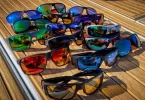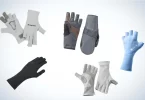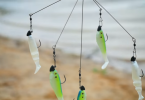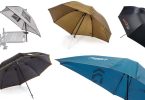Smoking Ribs At 250
If you know anything about smoked ribs, you know that the food must be cooked over a lower heat for an extended period if it is to turn out correctly. The question is how long to smoke ribs at 250 degrees? Many recipes call for a smoker temperature of 225°F, which is a rule of thumb to follow. You’re probably reading this article because you’re looking for a great way to smoke the delicate ribs. Maybe you’ve had incredible smoked BBQ ribs from an eatery or a friend and would like to learn how to smoke ribs yourself. You’ve come to the right place.
Our 250-degree rib smoking technique will assist you in preparing tender, smoky, moist ribs. This recipe and process work well with spare ribs or baby back ribs. We’re all aware that you’ve blackened a few racks of ribs, so sit back, enjoy a drink, and don’t worry. We’re about to demonstrate how it’s done! Pork ribs are delicious when adequately smoked, but they can be disastrous if smoked wrongly.
The perfect place to figure out what works for you is to practice and experiment with various available recipes and new recipes you create. However, turning up the heat a few degrees will not harm the result, and you will be able to serve the ribs much faster and you would be having no more confusion of how long to smoke ribs at 250 degrees. Back ribs are separated from the spine only at the top. A noticeable curve runs the length of the rack, making them easy to spot. Back ribs sometimes are referred to as “baby backs,” and they’re not as large as spare ribs. These don’t contain as much meat as spare ribs, and what heart they do have is much leaner.
Preheat Your Smoke
You must first preheat the smoker before cooking anything. To consider removing or not eliminating the protective layer, the answer is simple: if you don’t remove it, your ribs won’t be as tender as they could be. It is not difficult to remove the lipid layer. It is gleaming and situated on the bone side. You ought to be able to rip the protective layer from the ribs if you chopped a large enough flap. Make an effort not to cut the rib meat during the process. It allows the rub to work its magic.
Choose a favorite rub or experiment with different spices. The goal of a rub is to add flavor rather than overpower the taste of the meat. Wet the rack of ribs with olive oil or mustard before trying to apply the rub. It will aid in the adhesion of the rub. By moistening the ribs, the rub adheres well, and a great crust forms.
Use Mop Sauce
There are various claims for and against using a mop while cooking ribs, but we believe the advantages outweigh the downsides. So several experts say that using a mop will start making the outer crust soggy and prevent the formation of crunchy but this is not true if you use it gently and at the right time. The moisture from a mop will entice smoke to your ribs in a beneficial way, offering them extra smoky flavor in less time. A mop will also help keep your food from drying out; if you’re preparing food, your ribs low to the ground.
Cook Your Ribs
It can help caramelize your meat and add flavor to the taste and color of your ribs, depending on the ingredients you use to start making your mop. It’s a fun time to explore by combining different flavors to establish your signature smoking style.
So now your smoking grill has reached temperature, put your ribs in it. The ribs would then take about two hours to cook, or around an hour and a half per pound. You can adjust the preparation temperature to suit your tastes.
Get the Perfect Smoke
Also, bear in mind that a small rack of baby ribs will not require the whole 2 hours of cooking time. Just use a meat thermometer to check the core temperature of the ribs. Put the bone side of ribs down, in the smoker. These will help to keep the beef moist and protected. It’s important to smoke the ribs at the right temperature, but it’s at this point that the fun starts.
Overcooked ribs are those that have been cooked so thoroughly that the food literally falls off the bone when touched. That makes it likely to have lost much of its moisture, giving it a distasteful mouth feel. When the food is too dry, it is also more challenging to reheat leftover food. Instead, remove the ribs from the oven when they attain a core temperature of 195 degrees Fahrenheit. The food will tend to wear out if permitted to cook past 203 degrees.
Tips
After smoking ribs at 250 use a paper towel, grab it and slowly pull it toward the opposite end. With any luck, it should come off in one piece. If the membrane breaks, try again and again until all of it is off. Trim off any loose fat or membrane. Sprinkle on the lovely sauce, then the beef seasoning, and finally the black pepper.
Cover the ribs on all sides, including the top and bottom. Ribs should be smoked. Transfer your ribs to a cutting board once they have reached an internal temperature of 200-205 degrees F and are tender when bent. Allow your ribs to rest for at least 15-20 minutes on your cutting board before slicing and being able to serve.
Essential Tools for Smoke Ribs
Nonstick Rib Rack: The Non-Stick Rib Rack is an excellent tool for grillers who are limited on space. “The rack reduces space-hogging by about two-thirds.
Rib Rings: BBQ Rib Rings, another tool for grilling ribs that maximizes space, are a brilliant creation that enables you to broaden your cooking space while also placing the meat in a vertically circular pattern.
The Cast Rib Roaster: With the Cast Rib Roaster, you can grill ribs faster without compromising quality.
Perfect Mix Smoking Pellets: Even though there are many different types of pellet smoker grill combo to choose from, not all are created equal. The best smoking pellets combine a variety of flavors.
Smoke Pellet Grill: The wood pellet grill and smoker give you 811 square inches of cooking surface area with an upper and lower rack.
These were the essential tools to use for smoking and we hope the ambiguity is clear for how long to smoke ribs at 250 degrees.








